In the first article in this pair, I proposed the hypothesis that all representational paintings appear chaotic, even abstract if you must, if you zoom into them closely enough. But as you zoom out you reach a point where their marks organise into an image which our brains see as representing the tangible or imagined. If you’re looking from afar at the whole painting and this fails to happen, then you can be confident that it is truly abstract art.
Here, I present a series of images for paintings from five masters who worked in very different styles and periods, which should help illustrate my point. The five are:
- Rembrandt, particularly his Jewish Bride from about 1667;
- Léon Bonnat, known as one of the great academic painters of his time, in his oil painting of Arabian Sheikhs in the Mountains from 1872;
- Jean-Léon Gérôme, in his Carpet Merchant (of Cairo) from 1887, a painting of painstakingly detailed realism;
- John Singer Sargent, in his watercolour sketch of an Arab Woman from 1905-06, which is highly ‘gestural’;
- Paul Cézanne, in his Post-Impressionist Forest Scene (Path from Mas Jolie to Château noir) from 1900-02, which is composed of his distinctive ‘constructive strokes’ of the brush.
I start with Rembrandt. Late in his career, after about 1650 in particular, his method and style of painting changed quite markedly. His paintings came to create visual effects as much by surface textures, as by form or colour.
Some modern painters have argued that the marks made by Rembrandt, as they appear to be abstract in character, foresaw and gave precedent to abstract painting. Nothing could be further from the truth, of course: the driving force behind this making of marks is to create the overall, thoroughly realistic, illusion, but by means other than mimesis in detail.
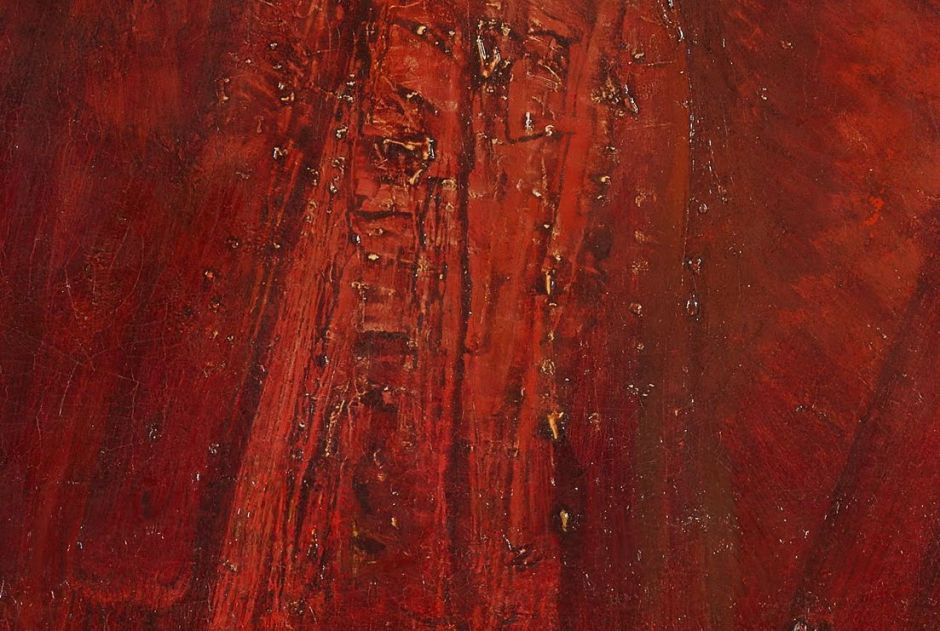
The width of this close-up view of fabric is about 30 cm (12 inches). There is a wide range of different types of mark, and degrees of organisation in different parts of the paint layer.

A similar-sized area from another fabric shows very different structure and texture.


When viewed overall, seemingly chaotic and disorganised marks assemble into rich fabric textures, jewellery, and more. Seen in real life, this painting has a unique reality as a result of this fine structure.
Here is another example of his approach to detail in clothing, this time from his earlier Bathsheba with King David’s Letter from 1654.
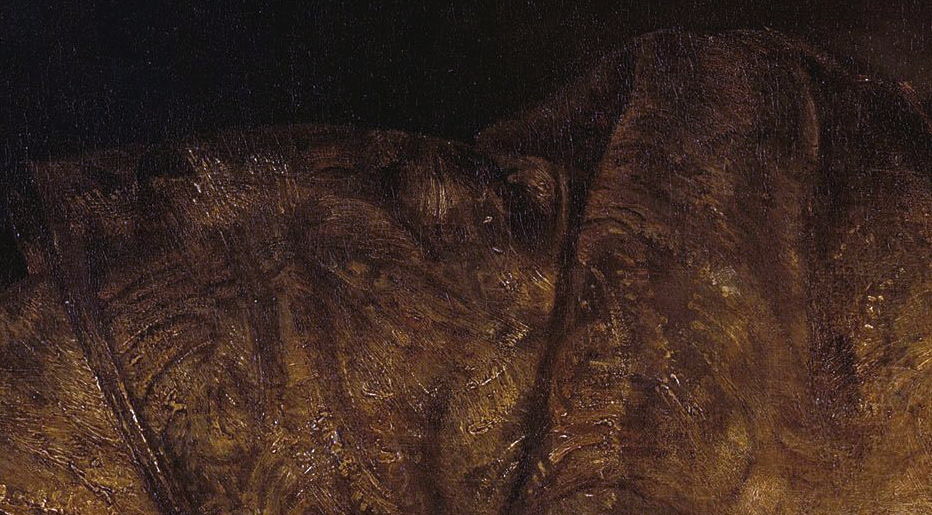
Here’s a similar series looking at the facture in Léon Bonnat’s Arabian Sheikhs in the Mountains from 1872. Although known as an academic painter, Bonnat’s brushwork, in this work in particular, is remarkably rough when viewed close up.

This is an area of about 10 cm (4 inches) across, which appears as rugged as the landscape which he was painting.

Zooming out gives a better idea of the very wide range of marks he has employed, from strokes with dilute paint to dry scrubbing and textures.

High chroma clothing is rendered very loosely, and the whole starts to resolve into the more intelligible at last.
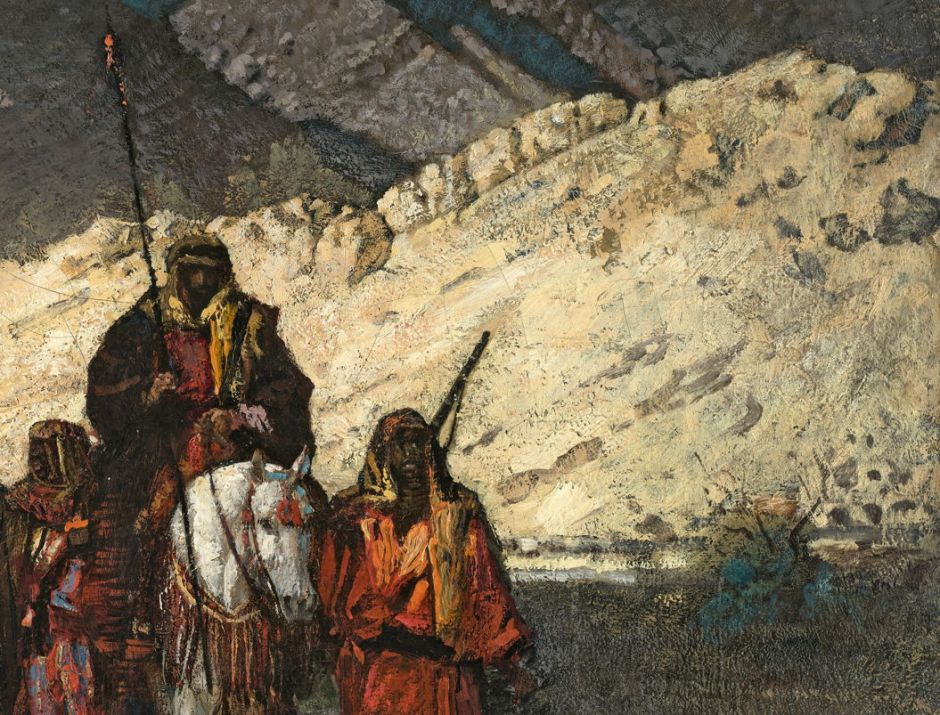
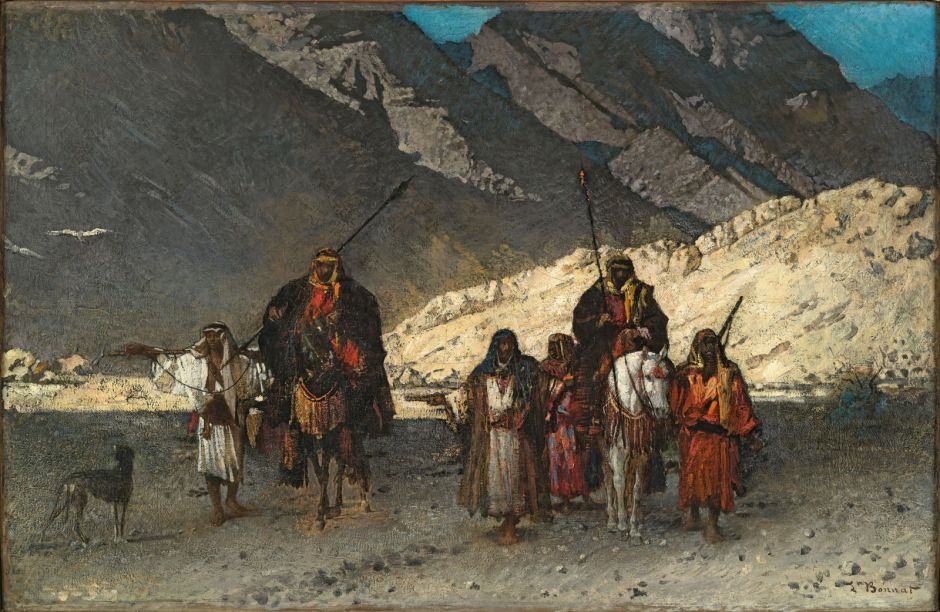
By way of complete contrast, here is one of Gérôme’s exquisitely detailed realist paintings showing a trading scene in Cairo: The Carpet Merchant from 1887, just over two centuries after the death of Rembrandt.
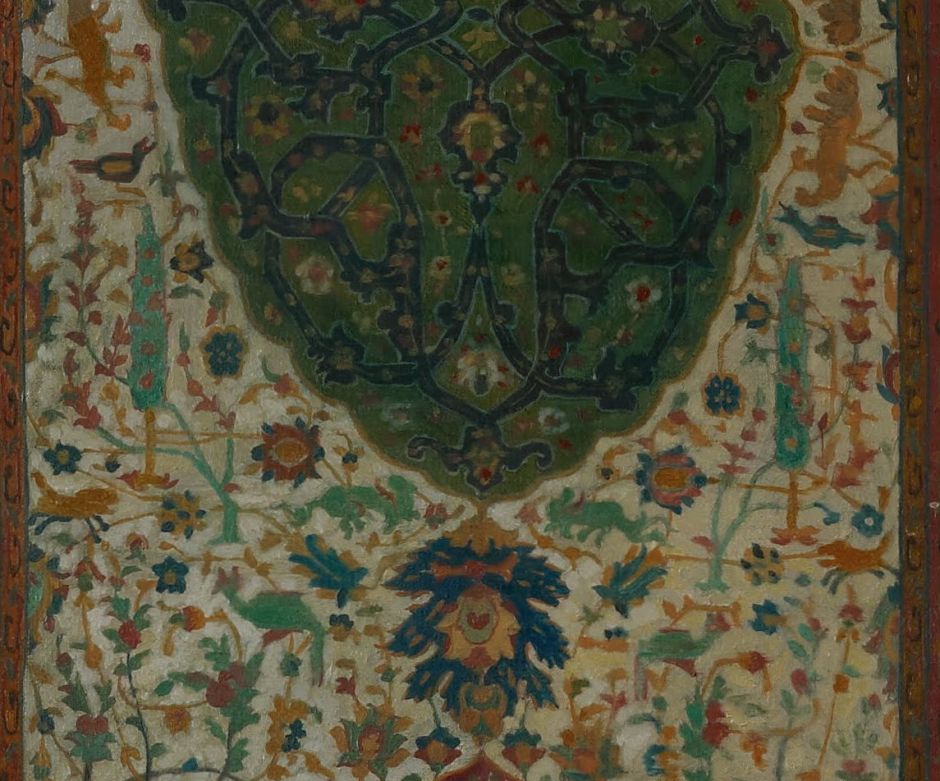
This fine detail view shows an area which is about 15 cm (6 inches) across, into which Gérôme has packed amazing detail. The complex pattern is clearly that of a woven tapestry or carpet, and there is no suggestion that this image was created in paint, nor of the tools used to form the paint layer.

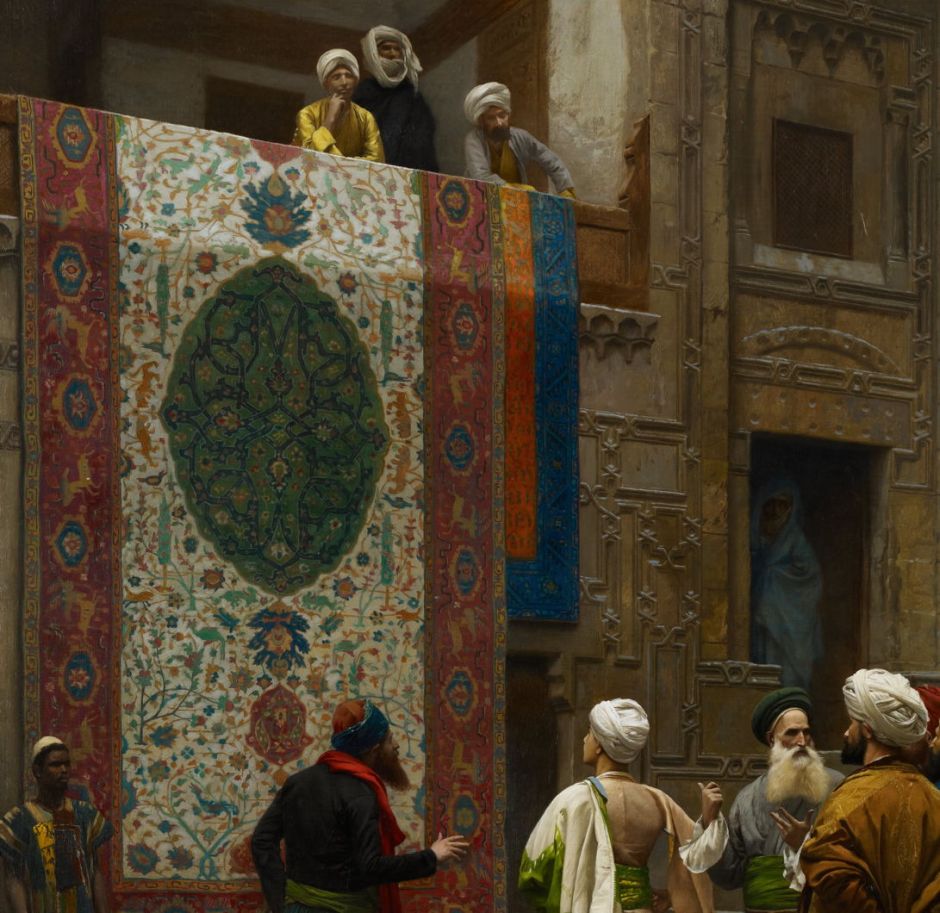
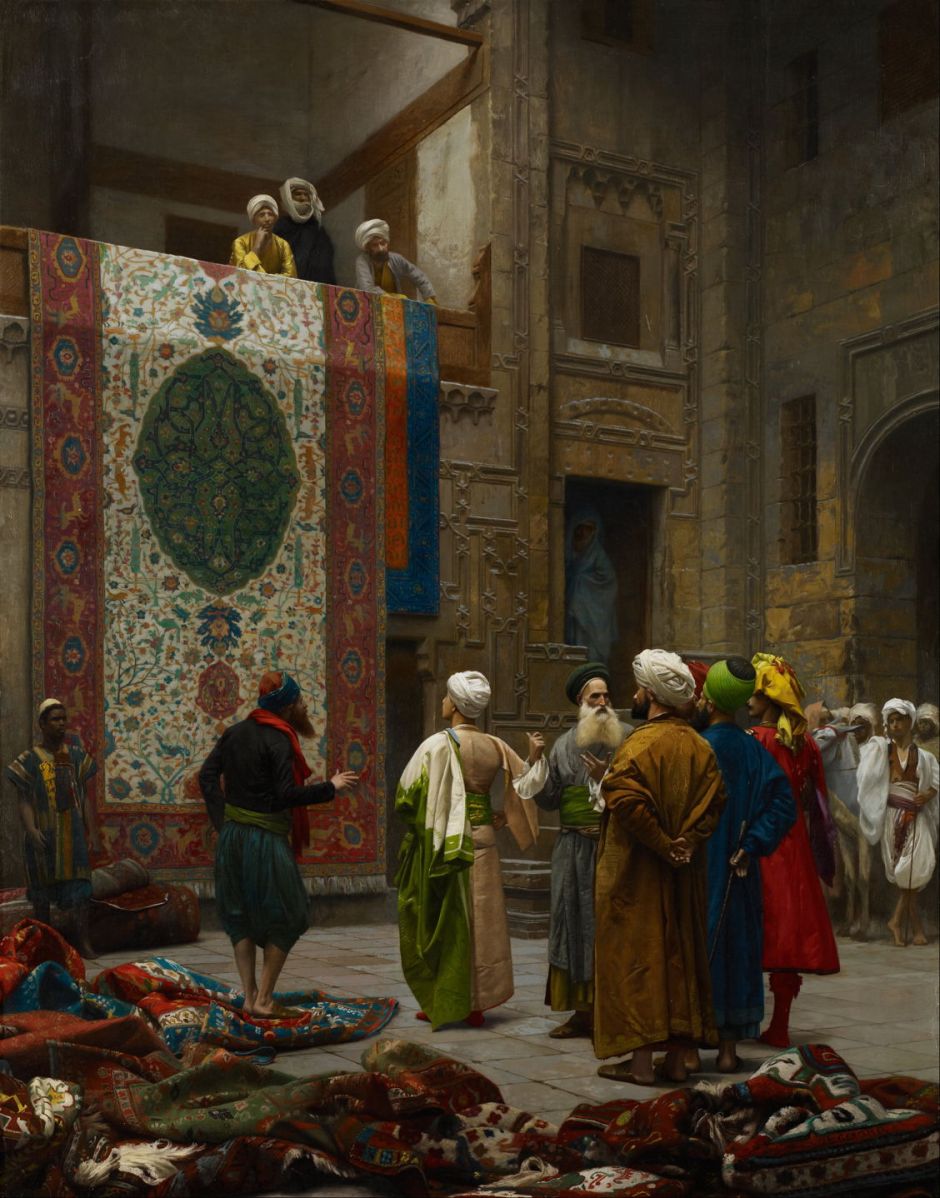
The whole painting is almost photographic in its detail, and in his later career Gérôme was an active photographer, who encouraged the adoption of photography as a new art form.
In his portraits and finished paintings, John Singer Sargent was also a realist, but when sketching, particularly in watercolours, he could be exceedingly gestural. Here is one of his minimalist watercolour sketches, painted in 1905-06, in which he assembles watercolourist’s marks of apparently ‘abstract’ form into a highly representational painting.
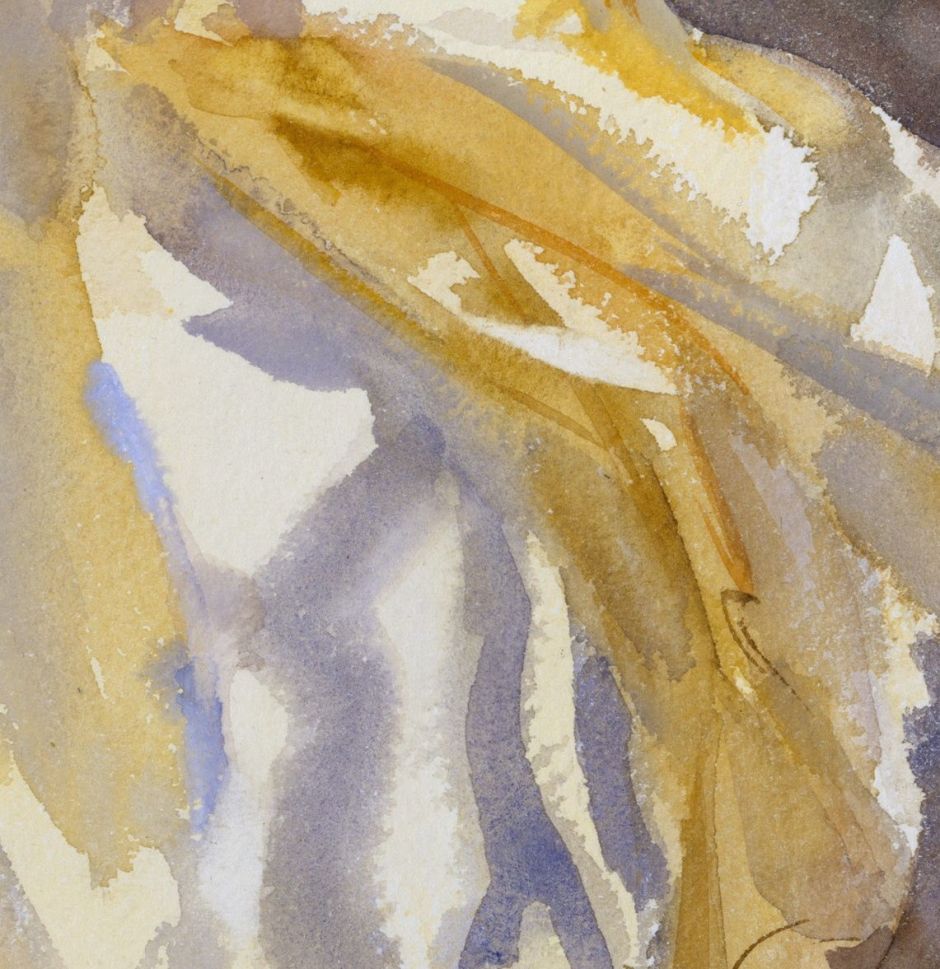
This close-up view is about 12 cm (5 inches) across, and shows Sargent’s rich watercolour technique, founded on marks made using a brush loaded with pigment suspended in water. There are reserved areas of unmarked paper, strokes painted onto wet paper, those applied when the paper was essentially dry, superimposed strokes, varying density of pigment and loading of the brush. In this example, Sargent hasn’t used wax resist, which was one of his favourite techniques.
The end result, at this level, appears quite random and with very little structure.
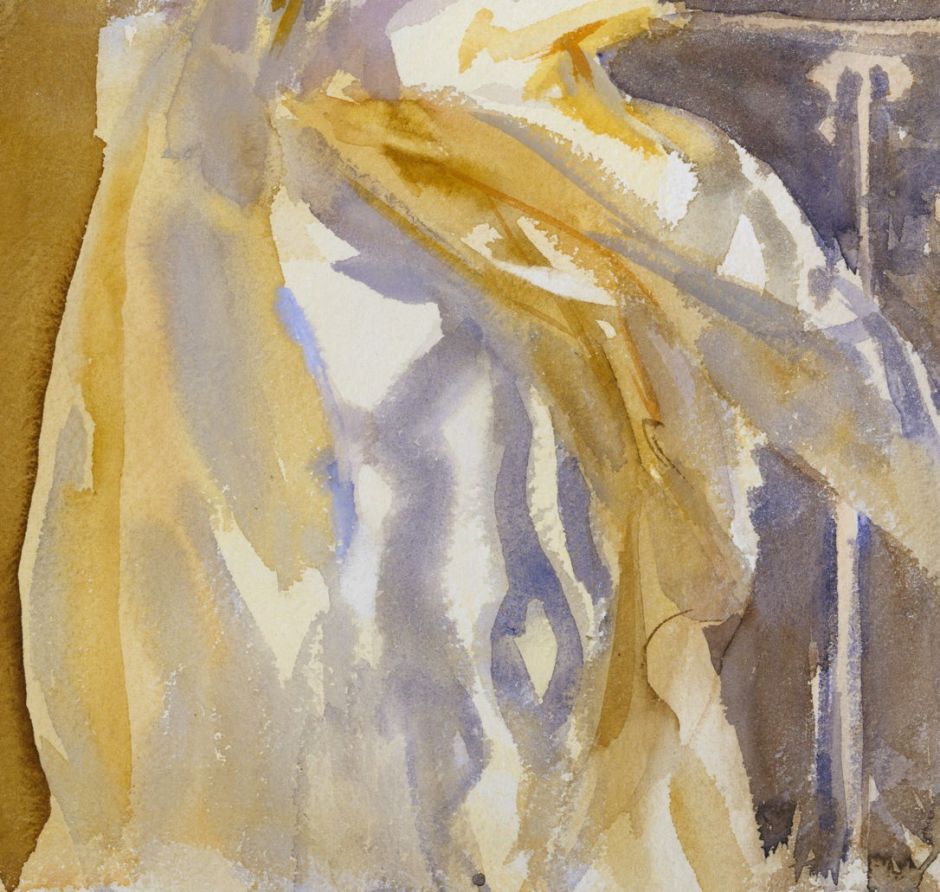
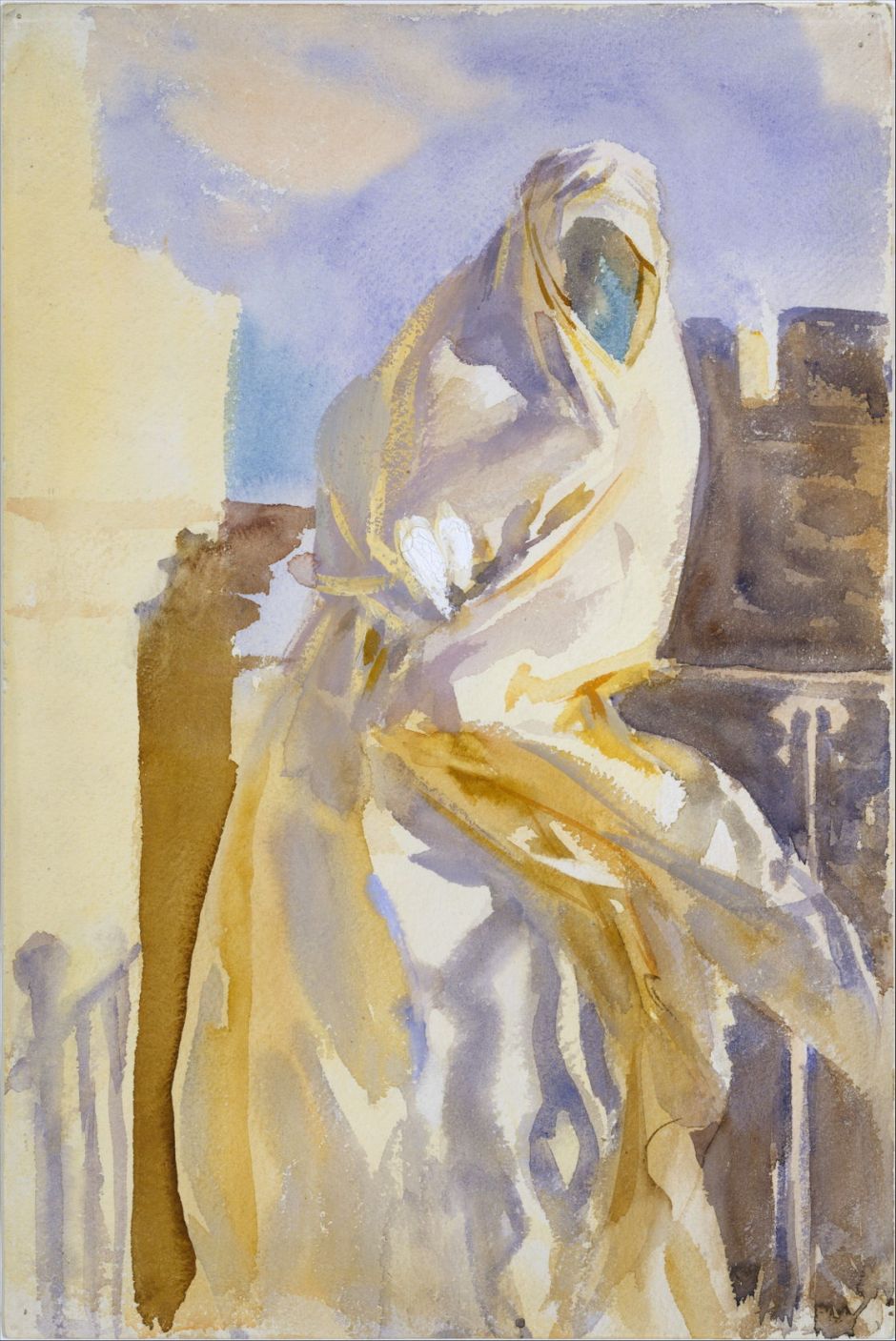
Once our brain has the whole image, it suddently ‘pops’ into a convincing and quite three-dimensional object, and its reserved space and brushstrokes form a white chador.
My final series of images comes from one of Paul Cézanne’s late landscapes, Forest Scene (Path from Mas Jolie to Château noir), which was actually painted slightly earlier that Sargent’s watercolour sketch, in 1900-02. By this stage, Cézanne had developed his characteristic ‘constructive strokes’, blocks of several parallel brushstrokes from which he built much of his paintings, particularly passages representing foliage.
In the twentieth century, it was claimed that Cézanne’s constructive strokes were a direct precedent to Cubism and abstract art. This painting, at least, appears to be representational when it is examined at multiple levels across this series of images.
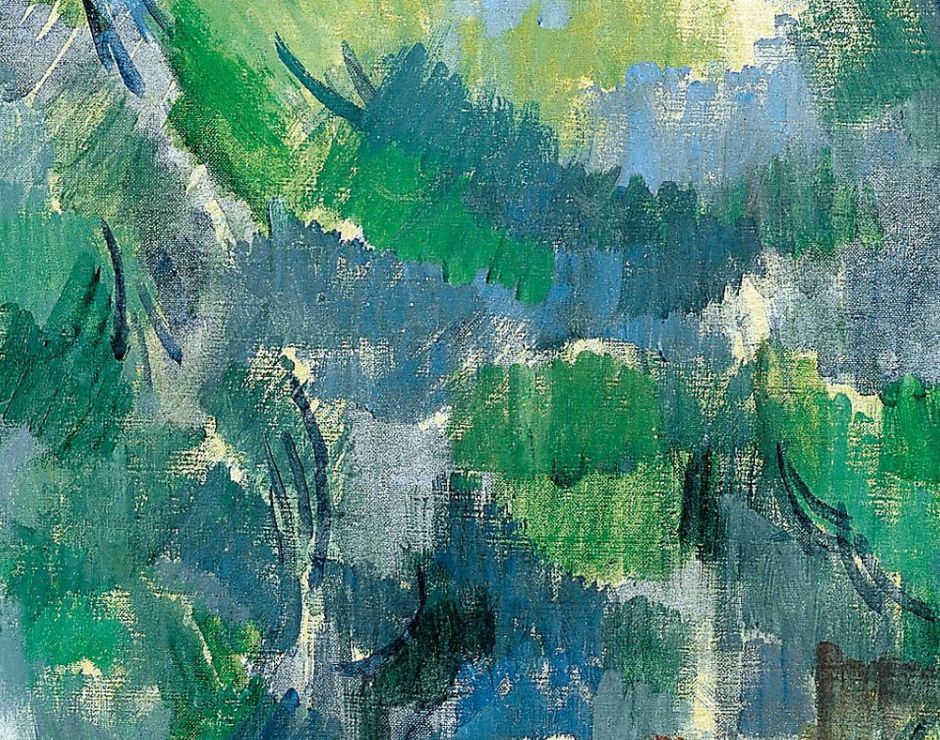
In this close-up view, the width is about 25 cm (10 inches).

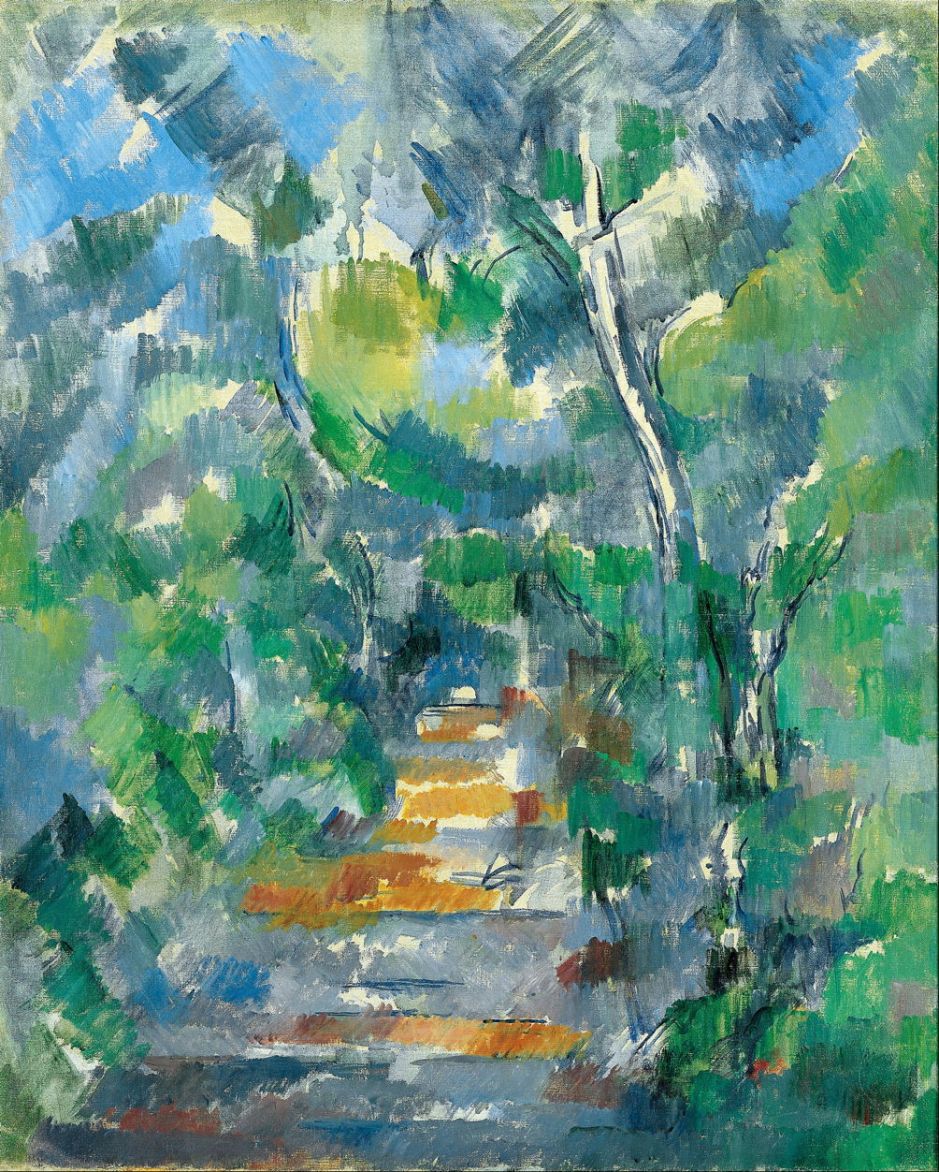
This is not a painting which can be read well when close, even looking at the whole. However, Cézanne’s distinctive constructive strokes form convincing vegetation and foliage without overwhelming the eye with detail. There is no doubt that this is intended to represent a path receding into a forest. It is not abstract.
Although many artists stand back to assess the overall look of their work in progress, most work well within arm’s length of their paint surface. One notable exception to this was Joaquín Sorolla, who had special brushes made for him with handles a metre or more in length so that could paint very large canvases at a distance; Whistler is also known to have used very long brush-handles.
The great skill of each of these masters is that when they painted they could only see their marks; it was not until they stepped well back that they could see what they were accomplishing. This requires the painter to have a very detailed mental image in which those marks are assembled into the whole. That may, in this respect, be the very mark of genius.

